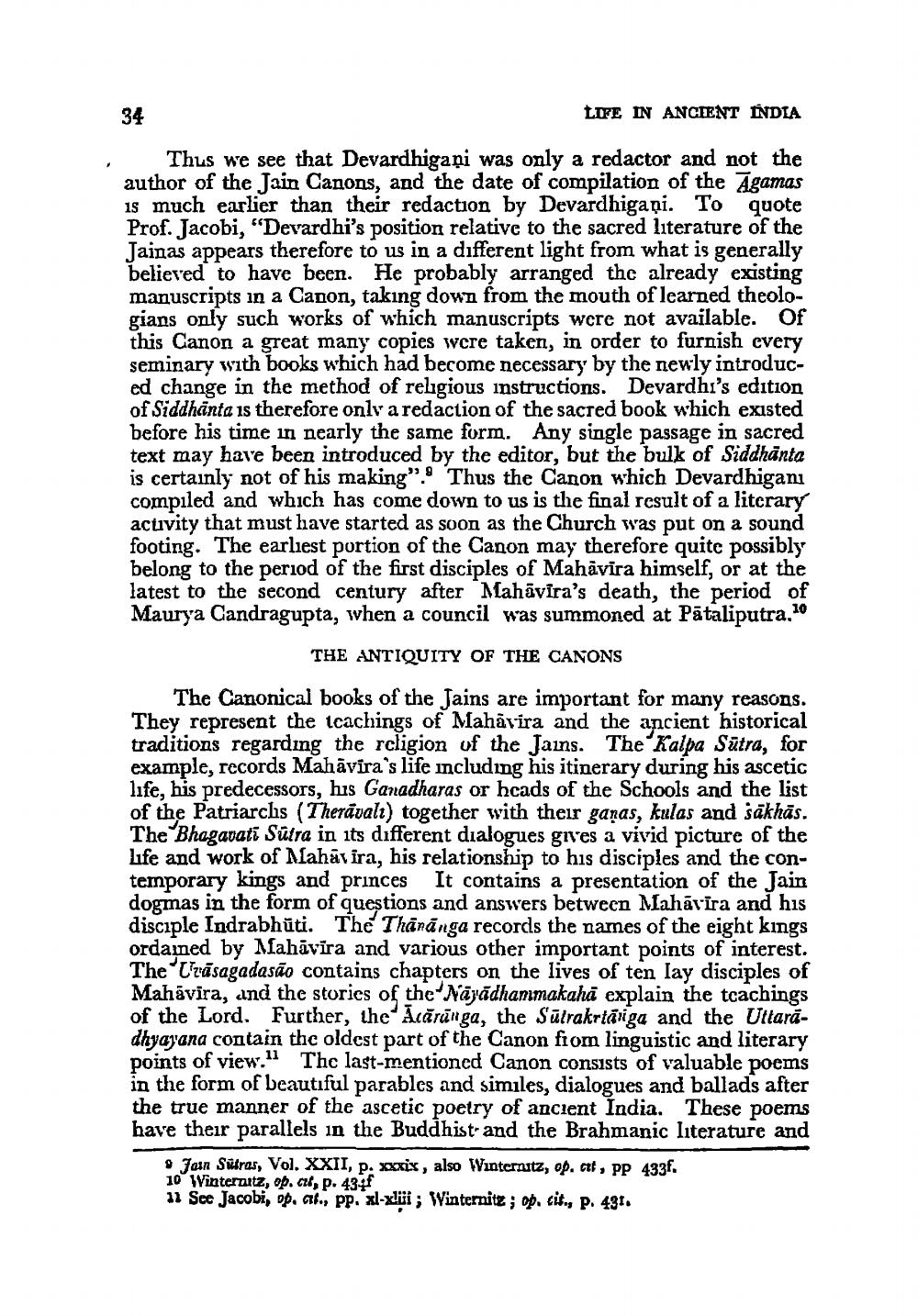________________
34
LIFE IN ANCIENT INDIA
Thus we see that Devardhigaội was only a redactor and not the author of the Jain Canons, and the date of compilation of the Agamas 1s much earlier than their redaction by Devardhigaại. To quote Prof. Jacobi, "Devardhi's position relative to the sacred literature of the Jainas appears therefore to us in a different light from what is generally believed to have been. He probably arranged the already existing manuscripts in a Canon, taking down from the mouth of learned theologians only such works of which manuscripts were not available. Of this Canon a great many copies were taken, in order to furnish every seminary with books which had become necessary by the newly introduced change in the method of religious instructions. Devardhi's edition of Siddhānta is therefore only a redaction of the sacred book which existed before his time in nearly the same form. Any single passage in sacred text may have been introduced by the editor, but the bulk of Siddhānta is certainly not of his making" . Thus the Canon which Devardhigani compiled and which has come down to us is the final result of a literary acuvity that must have started as soon as the Church was put on a sound footing. The earliest portion of the Canon may therefore quite possibly belong to the period of the first disciples of Mahāvira himself, or at the latest to the second century after Mahavira's death, the period of Maurya Candragupta, when a council was summoned at Pataliputra, 10
THE ANTIQUITY OF THE CANONS
The Canonical books of the Jains are important for many reasons. They represent the tcachings of Mahavira and the ancient historical traditions regarding the religion of the Jains. The Kalpa Sutra, for example, records Mahāvira's life including his itinerary during his ascetic life, his predecessors, his Ganadharas or hcads of the Schools and the list of the Patriarchs (Therävalt) together with their ganas, kulas and sākhās. The Bhagavati Sūtra in its different dialogues gives a vivid picture of the Life and work of Maharira, his relationship to his disciples and the contemporary kings and princes It contains a presentation of the Jain dogmas in the form of questions and answers between Mahāvīra and his disciple Indrabhūti. The Thänănga records the names of the eight kings ordained by Mahavira and various other important points of interest. The Crāsagadasão contains chapters on the lives of ten lay disciples of Mahāvīra, and the stories of the Nājādhanmakahā explain the tcachings of the Lord. Further, the Acarūnga, the Sūtrakrtáriga and the Uttaradhyayana contain the oldest part of the Canon fiom linguistic and literary points of view.11 The last-mentioned Canon consists of valuable poems in the form of beautiful parables and similes, dialogues and ballads after the true manner of the ascetic poetry of ancient India. These poems have their parallels in the Buddhist and the Brahmanic literature and
. Jan Sülras, Vol. XXII, p. xxxix, also Winternitz, op. cit, pp 433f. 10 Winterzitz, op. cui, p. 437 11 See Jacobi, op. cit., pp. xl-xliii ; Winternitz; op. cit., p. 431.




